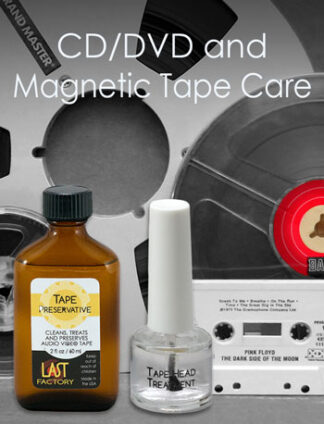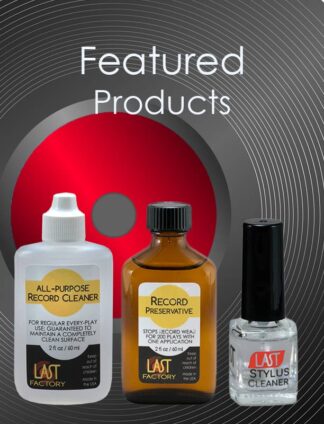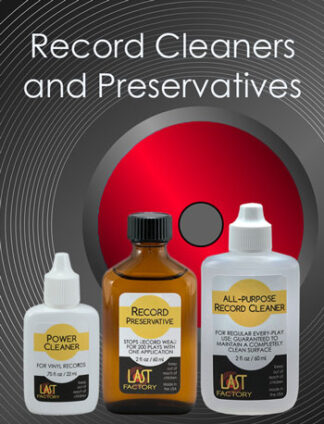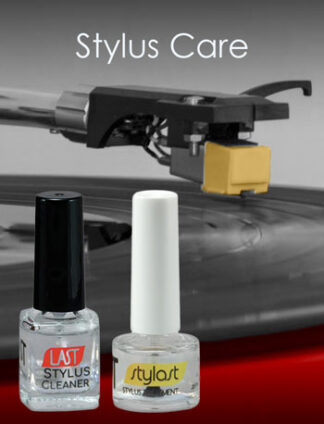-After a long answer to a customer, we are posting part of it separately as a good explanation how records are made. -Webmaster
 Vinyl record creation involves many additives
Vinyl record creation involves many additives
Making a vinyl record involves the addition of various additives to the vinyl pellets. These enable a mixture to quickly melt and flow into the molding cavity as the press closes. At the start, vinyl pellets roll via a chute into a heated auger chamber. The vinyl melts and forms into a biscuit-sized puck that a press-operator places into the center of the record press. At the same time that the pellets enter the auger, at least two other liquid compounds are added to the pellets. The first is an internal “lubricant”, added so the the vinyl will flow smoothly and continuously from the center of the press toward the outside edge of the press. At the same time yet another compound is added so that the finished work piece (the record) will separate cleanly from the faces of the stamper molds. Depending upon the vinyl, these compounds may be mixed ahead of time and are part of the “charge”. Other times the press operator adds smaller amounts depending on operating dynamics.
TLDR: The pressing process involves adding an “internal lubricant” and a “mold release agent” to the vinyl mixture.
A spry operator is a plus
The operator is usually in charge of several presses during a run. They will be moving constantly from press to press adding more or less of the additives depending on press operations and vinyl quality. Years ago, I visited a pressing plant (no longer in business) where the operator sprayed a proprietary mold release coating on the faces of the press just before the press closed. If the operator wasn’t sufficiently fleet of foot, a press would close and clamp shut before he could spray, with (sometimes) disastrous results.
The clamping pressure holding the press closed during the process is very high (40,000 to 70,000 pounds per square inch). At the completion of the operation, the press cools. The operator removes the record and places it on a spindle to cool further. Then spindle is off to the packaging room, where the operator removes and visually examines each for defects. After passing inspection, the packager slips the record into an inner sleeve and final outer jacket.
Pressing Residues remain on the record
At NO time of the whole operation is the record cleaned or any pressing residues removed from the surface. Another factor is how the press faces are cooled. Because the pressure is so high inside the press, the machine forces cold water through the passages that held very hot steam under high pressure during the pressing operation. This is to cool the record so that it is not in a still molten state when the press opens. However, this means some of the mold release agent and internal lubricants are locked into the vinyl under high pressure. Over a period of time, these residues gradually diffuse from the inside of the record out to the surface. This creates noise and a gray, powdery contamination that keeps repeating itself.
There are few remaining record pressing plants. We designed LAST All Purpose Record Cleaner for general purpose record cleaning. It safely removes dust, air-borne debris and finger-prints. However, it is not suited to the removal of pressing residues or tenacious oils, fats, or silicon fluids, such as come from the previously discussed release agents and lubricants. For this you may have success with a Vacuum Record Cleaning Machine. We like brands such as a Keith Monks (UK), Nitty Gritty or VPI (US).
At The LAST Factory, we manufacture a specialized cleaner called Power Cleaner for Records. It is specifically formulated to allow deep cleaning and removal of those offending contaminants from the surface of vinyl records.





